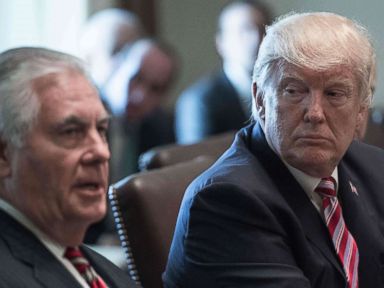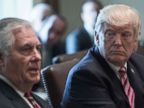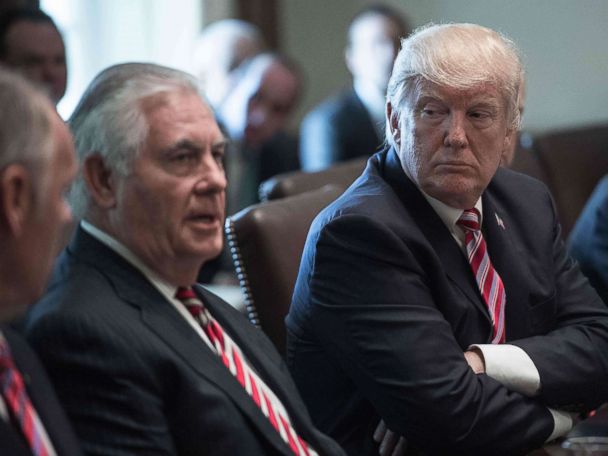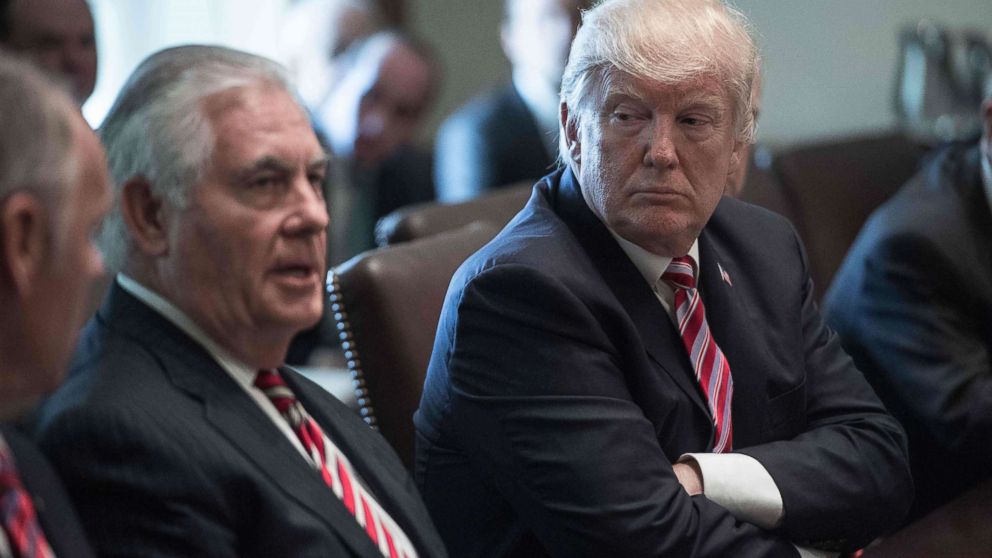





The U.S.’s ranks of diplomats are losing key leaders at a “dizzying speed” as the State Department struggles to recruit new talent amid a hiring freeze and sinking morale in the Trump administration, according to a new letter from a top ambassador.
Sixty percent of the agency’s career ambassadors, the highest rank for diplomats, have retired or quit since January. Nearly half of career ministers — the next level down and equivalent to the military’s “three-star generals” — are gone too, down to 19 from 33. The “two-star” minister counselors have seen their numbers drop by 62 diplomats since Labor Day alone — “and are still falling,” writes Ambassador Barbara Stephenson, president of the Foreign Service officers’ union.
Without these leaders, the U.S. could face a diminished role on the world stage, unable to keep up with the increasingly aggressive foreign policies of rising countries like China, she argues.
“There is simply no denying the warning signs that point to mounting threats to our institution — and to the global leadership that depends on us. There is no denying that our leadership ranks are being depleted at a dizzying speed,” Stephenson, who has headed the American Foreign Service Association, or AFSA, since 2015, writes in a new essay in the group’s monthly publication.
AFSA rarely makes forays into political issues, making Stephenson’s letter that much more surprising.
There has been a sharp impact on the next generation as well, AFSA reports. A department-wide hiring freeze prevents new employees from coming onboard and limits current employees’ ability to take on new roles, unless granted special permission. After 366 new Foreign Service officers were admitted in 2016, only about 100 will join in 2018, according to AFSA.
What’s worse, they say, is that interest in joining the Foreign Service is “plummeting” now because of these policies. More than 17,000 people applied to take the Foreign Service test last year, but less than half that number have taken it so far in 2017.
The implications of that trend could be felt long-term, with a new crop of talented diplomats missing and unable to take the helm in a couple of decades, Stephenson argues.
“The talent being shown the door now is not only our top talent, but also talent that cannot be replicated overnight,” she writes.
While the union, and many others outside the government as well, are raising alarm bells about the situation, the president has made clear that he does not see the need to fill many of the roles or build future talent.
“The one that matters is me. I’m the only one that matters because, when it comes to it, that’s what the policy is going to be,” he said in a Fox News interview last week.
Secretary of State Rex Tillerson has said he is revamping the State Department to be more efficient and sustainable — calling the project “the most important thing I want to do during the time I have.”
That “redesign” began with an employee survey and hundreds of employee interviews, led by an outside consulting firm, to hone the department’s focus and mission, Tillerson’s team has said. Until it is complete, Tillerson has implemented that hiring freeze and left several top roles vacant or filled by staff in an acting capacity.
Tillerson has said he has the “utmost respect for the Foreign Service officer corps here, and they’re vital … and critical to the country’s ability to carry out its foreign policy,” telling the New York Times magazine he doesn’t understand the backlash to the redesign. “I’m mystified by it. I’m perplexed by it.”
But to foreign policy hands, he is depleting the nation’s diplomats, which will diminish America’s role on the world stage — or lead to a heavier reliance on the Pentagon at a time when the military is already stretched thin by two wars in Afghanistan and Iraq and Syria, as well as other hotspots around the world.
“The rapid loss of so many senior officers has a serious, immediate and tangible effect on the capacity of the United States to shape world events,” Stephenson writes. “Were the U.S. military to face such a decapitation of its leadership ranks, I would expect a public outcry.”
Military leaders have often called for robust funding of the State Department. Secretary of Defense James Mattis is often quoted from his 2013 Congressional testimony, when he told the Senate Armed Services Committee, “If you don’t fund the State Department fully, then I need to buy more ammunition.”
Tillerson and Mattis have worked closely in the Trump administration, with Mattis pointing out at every turn that Tillerson and diplomacy are at the helm on their North Korea strategy.
It’s not just the loss of personnel or lack of hiring. There have been complaints about mismanaging talent as well.
Politico reported Monday that the State Department has assigned “several hundred” employees to process public information requests, often known as FOIA’s, because of a backlog that has built up over more than a decade.
While the State Department would not confirm that number, an official told ABC News, “The current processing system just wasn’t working,” citing over 13,000 requests outstanding since 2006.
“The Secretary is taking an approach of calling on many capable hands to step in, as part of a surge, to clear the backlog,” the official added. “This is about accountability and efficiently getting these outstanding FOIA requests down.”
Despite the criticism, the personnel moves seem to have satisfied Tillerson’s boss.
“It’s called cost-saving. There’s nothing wrong with cost-saving. Rex is in there working hard. He’s doing his best,” Trump told Fox News last week.
If Trump does seem to have any concern about staffing at the State Department, it’s that there are not enough of “his” people in the agency to implement in the “America First” vision he promised — agreeing with conservative commentator Laura Ingraham on this point in that same Fox News interview.
So far, the Trump administration has only seven high-level political appointees confirmed by the Senate and working in the department today — outside of Secretary Tillerson, but including USAID Administrator Mark Green and Deputy Secretary of State John Sullivan. An additional eight nominees are working their way through the confirmation process now, with the Senate either awaiting their paperwork or the nominees awaiting a Senate hearing or vote.
But in the absence of Trump nominees, there are 30 senior roles filled by career diplomats in acting capacities. Although there is someone doing the work, they do not enjoy the full legal authority of their role or the image of speaking on the administration’s behalf to the world.
There are 39 other senior roles that are vacant, but Tillerson has said he plans to eliminate 18 of those and fold their responsibilities into other jobs. The Trump administration has named a nominee for one of the 39 roles — the chief of protocol — who is awaiting confirmation.
Nearly three dozen ambassadorships remain vacant as well, with the embassies’ number two, called the charge d’affaires, leading those U.S. missions.
